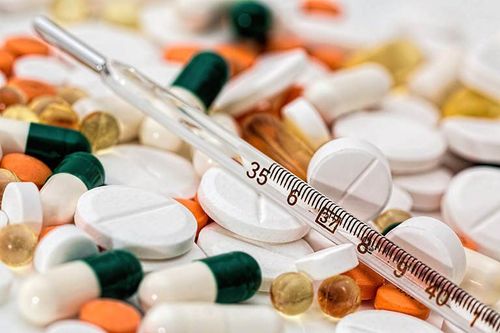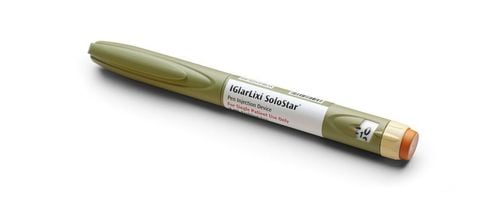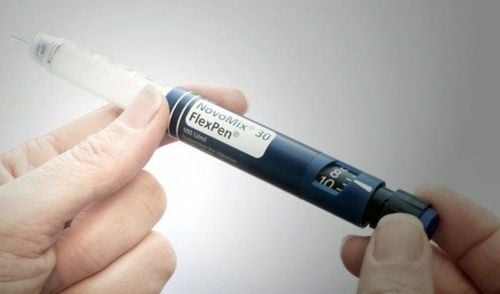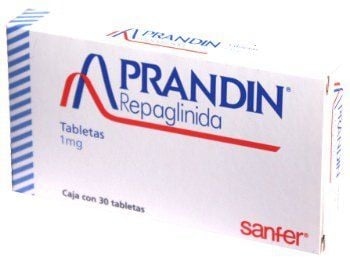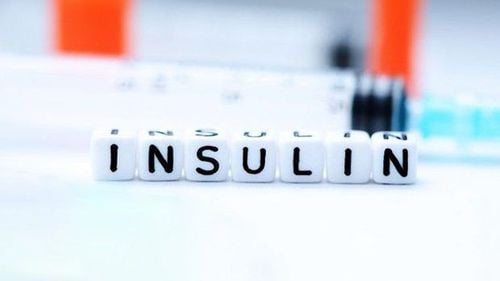This is an automatically translated article.
Potato is one of the common foods in everyday dishes. Potatoes can be processed in many different ways such as baking, mashing, frying, boiling, steaming, etc. Because they are rich in potassium, vitamin B and fiber, potatoes are very good for health. However, can people with diabetes eat potatoes? There are many misconceptions about what foods people with diabetes can or cannot eat. The following article will help you better understand potatoes and diabetes.
1. How do potatoes affect blood sugar?
Like other carbohydrate foods, potatoes can raise blood sugar levels. After eating, the body will break down carbohydrates in potatoes into simple sugars to move into the bloodstream, causing blood sugar to rise. For people with normal health, the hormone insulin will be secreted by the pancreas and released into the bloodstream, helping to transport sugar from the blood into the cells to be converted into energy. However, in people with diabetes, this process is not efficient. Instead of sugar moving out of the blood and into cells, sugar stays in the bloodstream, keeping blood sugar levels high for a long time. Therefore, eating a lot of carbohydrate-containing foods is considered detrimental for people with diabetes.
Patients with diabetes, if not well controlled blood sugar can lead to dangerous complications such as heart failure, stroke, kidney damage, nerve damage, amputation, loss of vision, ...
Depending on the patient's glycemic index and glycemic control goals, the diabetic patient will be recommended the amount of carbohydrates consumed per day. Carbohydrate intake can be limited to a very low intake of 20-50 grams per day to a moderate limit of 100-150 grams per day,...
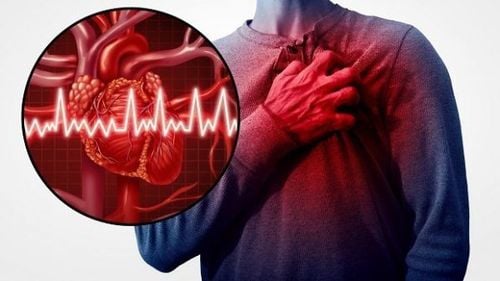
Bệnh tiểu đường có thể dẫn đến suy tim
2. How many carbohydrates are there in potatoes?
Potato is a food rich in carbohydrates, but the amount of carbohydrates in potatoes is not fixed but depends on many factors, including the method of food processing.
The following is the carbohydrate content of 1⁄2 cups (75-80 grams) of potatoes after being prepared in a variety of ways:
Raw potatoes: 11.8 grams Boiled potatoes: 15.7 grams Baked potatoes: 13.1 grams Cooked potatoes in the microwave: 18.2 grams Deep fried potatoes: 36.5 grams A small 170-gram potato contains about 30 grams of carbohydrates, a medium-sized 369-gram potato contains about 65 grams of carbohydrates. As a result, you can eat more than double the amount of carbs listed above in one meal.
The following numbers will help you compare the carbohydrate content of potatoes with other foods: a piece of white bread contains about 14 grams of carbohydrates, 1 small apple (149 grams) contains 20.6 grams, 1 cup (weighs 158 grams) gram) cooked rice contains 28g, 1 can of coca cola (350ml) contains 38.5g,...
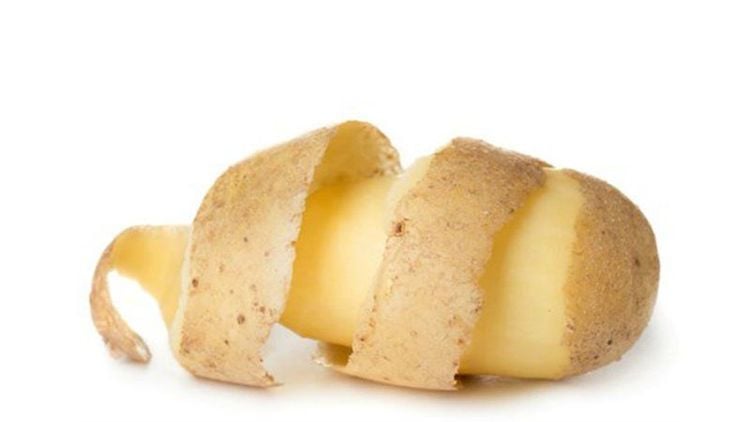
Khoai tây sống có lượng carbohydrate thấp nhất so với các dạng chế biến khác
3. Do Potatoes Have a High GI?
Learning about the GI and GL indexes is very important to know “can people with diabetes eat potatoes?” The glycemic index (GI) is a measure of how quickly or slowly blood sugar rises after eating starchy foods. The GI index consists of 100 landmarks, the higher this index is, the less beneficial it is to the health of people with diabetes. A low GI food diet is an effective way for people with diabetes to control blood sugar.
Foods with a GI > 70 are considered high GI foods. These foods will be digested, absorbed and metabolized quickly, causing a rapid rise in blood sugar after eating. Foods with a GI between 56-69 are considered medium GI foods. These foods are digested, absorbed, and moderately raised blood sugar. Foods with GI < 55 such as green vegetables, fruits, whole grains,... are considered low GI foods. These foods increase blood sugar slowly, steadily and decrease it slowly, helping to stabilize blood sugar in people with diabetes. Potatoes are a medium to high GI food. However, GI is not the best indicator of how foods affect blood sugar because GI does not take into account serving size and preparation method. The glycemic load index (GL) is considered a more advantageous indicator in assessing the amount of sugar in a food and its ability to raise blood sugar. The GL index is calculated as follows:
GL= (GI x actual grams of carbohydrates in 1 serving)/100
Like the GI index, the glycemic index is also divided into 3 groups:
GL ≤ 10: low glycemic index GL 11-19: average glycemic index GL >20: high glycemic index When you eat a lot of food, the GL will be equal to the total GL of each food combined. A low GI diet aims to keep the daily GL below 100.
4. Can people with diabetes eat potatoes?
Both GI and GL can vary widely depending on the potato variety and processing method used.
For example, one serving (150 grams) of potatoes can have a high, medium or low GL as follows:
High GL: Desire potatoes (mashed), french fries,... Medium GL: varieties of potatoes Potatoes Russet Burbank, Pontiac, Desiree (boiled), Charlotte, French fries, instant mashed potatoes Low GL: in potato varieties like Carisma, Nicola can Diabetics eat potatoes? If you have diabetes, you can choose Carisma or Nicola potatoes to slow the rise in blood sugar after eating.

Nên lựa chọn loại khoai tây phù hợp với bệnh nhên tiểu đường
5. Processing methods to help diabetics eat potatoes safer
The processing of food will change the starch structure, thus affecting the absorption of food into the blood. In general, the longer potatoes are cooked, the higher the GI will be. Therefore, boiling or baking for a long time will tend to increase the GI of potatoes.
However, cooling potatoes after cooking can increase the percentage of hard to absorb starch in the dish, which reduces GI by 25-28%. Thus, potato salad will be healthier for diabetics than french fries or hot baked potatoes.
Diabetics eating potatoes can also reduce the risk of fast blood sugar spikes after eating by processing potatoes with the skin on, adding lemon juice or eating potatoes with other foods containing protein and fat, this helps slows down the digestion of carbohydrates. For example, adding 120 grams of cheese to a 290-gram baked potato will reduce the GL from 93 to 39. Cheese is high in fat and will add almost 400 calories to a meal. Therefore, when applying this approach, people with diabetes need to consider total calorie intake if weight control is also a goal in diabetes treatment.
6. The risks when people with diabetes eat potatoes
A study done on 70,773 people found that people who ate 3 servings of boiled, mashed or baked potatoes per week had a 4% increased risk of type 2 diabetes, if they consumed french fries. , this risk increased to 19%. In addition, potato chips also contain a lot of fat, which increases the risk of cardiovascular diseases such as high blood pressure and high blood fat. In addition, french fries are high in calories, which can contribute to uncontrolled weight gain.
Although in most cases, it is safe for diabetics to eat potatoes, but patients must consider the portion size, the choice of potato type and especially the appropriate processing method. It is best for people with diabetes to avoid french fries and other potato dishes that are high in fat.
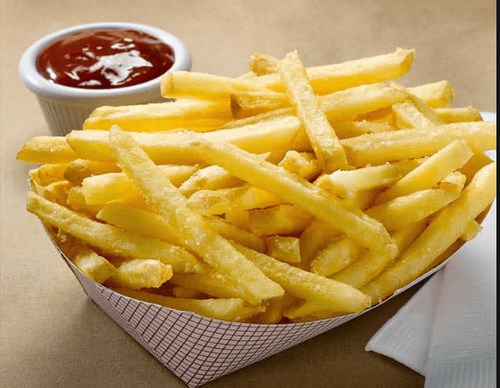
Tiêu thụ khoai tây chiên tăng nguy cơ mắc bệnh tiểu đường
7. Potato Alternatives for Diabetics
Although people with diabetes can eat potatoes, but if you want to limit and find other foods that are healthier, here are some suitable suggestions:
Carrots and beets: Both tubers are low on the GI and GL and have less than 10 grams of carbs per 80-gram serving. Carrots and radishes can be boiled, steamed or grilled to make delicious dishes. Cauliflower: Very low in carbohydrates but high in fiber. This is a good option for those on a diet. Pumpkin and squash are low-carbohydrate foods with a moderate to low GI. Taro: low in carbohydrates and has a GL of just 4. Taro can be sliced thinly and baked with a little oil, the taste is still delicious but healthier than french fries. Another good way to avoid a high-carbohydrate diet is to make sure half of your meal consists of healthy, non-starchy vegetables like broccoli, green leafy vegetables, cauliflower, peppers, green beans, tomatoes, asparagus, cabbage, cucumbers, lettuce,...
Diabetics can still eat potatoes, but you should process them to limit the amount of starch, avoid increasing it blood sugar.
If you want to control your diabetes well and build a suitable diet, you can go to Vinmec International General Hospital to visit and receive the best advice from specialists and nutritionists. nursing.
Please dial HOTLINE for more information or register for an appointment HERE. Download MyVinmec app to make appointments faster and to manage your bookings easily.
Reference source: healthline.com




